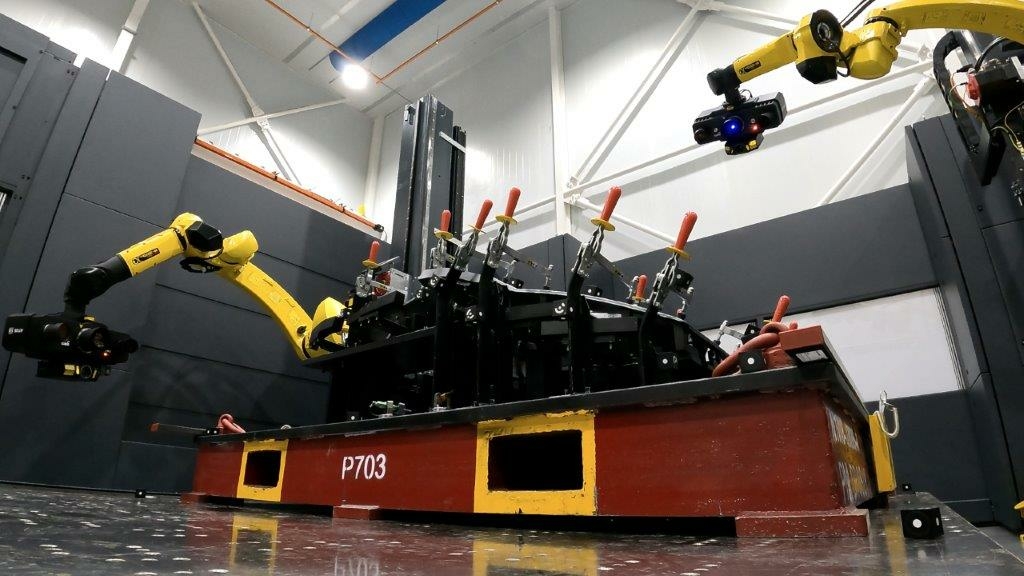This groundbreaking discovery offers new insight into the evolution of the complex nervous systems of invertebrate species and could inspire the development of autonomous underwater devices and other innovations in robotics.
Octopuses are not like humans – they are invertebrates with eight arms and are more closely related to clams and snails. Despite this, they have evolved complex nervous systems with the same number of neurons as in dogs’ brains, allowing them to exhibit a wide range of complex behaviors.
This makes them an interesting subject for scientists such as Dr. Melina Hale and William Rainey Harper, Professor of Organismal Biology and Vice Chancellor at the University of Chicago, who want to understand how alternative structures in the nervous system may perform the same functions as those in humans. such as limb movement detection and movement control.
In a recent study published in Current Biology, Hale and her colleagues discovered a new and surprising feature of the octopus’ nervous system: a structure that allows the intramuscular nerve cords (INCs), which help the octopus sense arm movement, connect the arms on opposite sides of the animal.
The surprising discovery provides new insights into the independent evolution of complex invertebrate nervous systems. It can also provide inspiration for robotic engineering, such as new autonomous underwater devices.
Horizontal section at the base of the arms (marked A) showing oral INCs (marked O) converging and crossing. Source: Kuuspalu et al., Current Biology, 2022
“In my lab, we study mechanosensation and proprioception – the way that movement and positioning of limbs are sensed,” Hale said. “These INCs have long been thought to be proprioceptive, so they were an interesting target to help answer the questions our lab was asking. So far, not much work has been done on them, but previous experiments have shown that they are important for arm control.”
With support for cephalopod research from the Marine Biological Laboratory, Hale and her team were able to use juvenile octopuses that were small enough to allow the researchers to image the base of all eight arms simultaneously. This allowed the team to trace the INCs in the tissue to determine their path.
“These octopuses were about the size of a nickel, maybe a quarter, so it was a process of placing the specimens in the correct orientation and getting the right angle when cutting [for imaging],” said Adam Kuuspalu, senior researcher Analyst at UChicago and lead author of the study .
Initially, the team studied the larger axial nerve cords in the arms, but began to notice that the INCs did not stop at the base of the arm, but rather proceeded from the arm into the animal’s body. Realizing that little work had been done to study the anatomy of the INC, they began tracing the nerves, expecting to form a ring in the body of the octopus, similar to axial nerve cords.
Through imaging, the team determined that, in addition to running along each arm, at least two of the four INCs extend into the body of the octopus, where they bypass two adjacent arms and join the third arm’s INC. This pattern means that all arms are connected symmetrically.
However, it was difficult to determine how the pattern would hold up on all eight arms. “When we were imaging, we realized that they don’t all come together as expected, they all seem to go in different directions, and we were trying to figure out, if the pattern held up for all the arms, how would that work?” he said Hale, “I even took out one of those kid’s toys – a spirograph – to play around with what it would look like, how it would all come together in the end. We needed a lot of imaging and drawing while we were racking our brains about what might be going on before it became clear how it all fits together.”
The results were not at all what the scientists expected.
“We think it’s a new design for a limb-based nervous system,” Hale said. “We haven’t seen anything like this in other animals.”
Scientists don’t yet know what function this anatomical design might have, but they have some ideas.
“Some of the older papers contained interesting insights,” Hale said. “One study from the 1950s showed that when you manipulate the arm on one side of an octopus with damaged areas of the brain, you will see the arms react on the other side. So it’s possible that these nerves allow decentralized control of reflex response or behavior. That said, we also see the fibers coming from the nerve cords to the muscles along their pathways, so they may also allow for continuity of proprioceptive feedback and motor control along their entire length.”
The team is currently conducting experiments to see if they can gain insight into this question by analyzing the physiology of the INCs and their unique layout. They also study the nervous systems of other cephalopods, including squid and cuttlefish, to see if they have similar anatomy.
Ultimately, Hale believes that in addition to illuminating the unexpected ways invertebrate species can engineer nervous systems, understanding these systems could aid the development of new engineering technologies such as robots.
“Octopuses can be a biological inspiration for the design of autonomous underwater devices,” said Hale. “Think of their arms – they can bend anywhere, not just at the joints. They can twist, extend their arms, and operate the suction cups, all independently. The function of the octopus’ arm is much more sophisticated than ours, so understanding how octopuses integrate sensory-motor information and movement control could support the development of new technologies.”
Reference: “Multiple nerve cords connect the arms of octopuses, providing alternative signaling pathways between the arms,” Adam Kuuspalu, Samantha Cody, and Melina E. Hale, November 28, 2022, Current Biology.DOI: 10.1016/j.cub.2022.11. 007
The study was funded by the United States Office of Naval Research.
What are the four classification of neurons?
Neurons are responsible for transmitting signals throughout the body, a process that allows us to move and exist in the world around us. Different types of neurons include sensory, motor, and interneurons, as well as structural neurons, which include unipolar, multipolar, bipolar, and pseudo-unipolar neurons.
How do we classify neurons? Neurons can be classified according to the direction of the action potential or the route along which information travels. This may interest you : “Zombie papers” won’t die alone. Documents withdrawn from a fraudulent note cited years later. Afferent neurons carry information from tissues and organs to the brain, and efferent signals carry information from the brain to effector cells in the body.
What are the 3 classifications of neurons?
However, in the case of the spinal cord, we can say that there are three types of neurons: sensory, motor, and interneurons.
- Sensory neurons. …
- motor neurons. …
- interneurons. …
- Neurons in the brain.
What are the four classes of neurons?
There are four main types of neurons: unipolar, bipolar, multipolar, and pseudounipolar. This may interest you : 15 Lifestyle Choices That Are Making You Age Faster.
What are the three important facts about neurons?
Neurons are made up of three basic parts: the cell body and two extensions called the axon (5) and the dendrite (3). Within the cell body is the nucleus (2), which controls the activity of the cell and contains the genetic material of the cell. On the same subject : Footprints bring science closer to understanding southern African dinosaurs. The axon looks like a long tail and transmits messages from the cell.
. Neurons are responsible for the transport and uptake of neurotransmitters – chemicals that transmit information between brain cells. Depending on its location, a neuron can function as a sensory neuron, a motor neuron, or an interneuron, sending and receiving specific neurotransmitters.
What are the functions of neurons?
Neurons are transmitters of information. They use electrical impulses and chemical signals to transmit information between different areas of the brain and between the brain and the rest of the nervous system.
What are the 2 main functions of neurons? Integrate incoming signals (to determine if information should be forwarded). Transmit signals to target cells (other neurons, muscles or glands).
What are the 5 functions of a neuron?
They are thought to play a role in both axoplasmic flow and axonal transport.
- Conduction of nerve impulses: Neurons conduct signals or impulses from one part of the body to another. …
- Ion gradients across the membrane: …
- Action potential initiation: …
- Action potential conduction: …
- synaptic transmission:
What are the 3 neurons and their functions?
Although there are billions of neurons and vast variations, neurons can be divided into three basic groups based on their function: sensory neurons (long dendrites and short axons), motor neurons (short dendrites and long axons), and relay neurons (short dendrites and short or long axons) axons).
What are the four main functions of a neuron?
Reception of general sensory information (touch, pressure, temperature, pain, vibration) Reception and perception of special sensations (taste, smell, sight, sounds) Integration of sensory information from different parts of the body and its processing. Generating responses.



